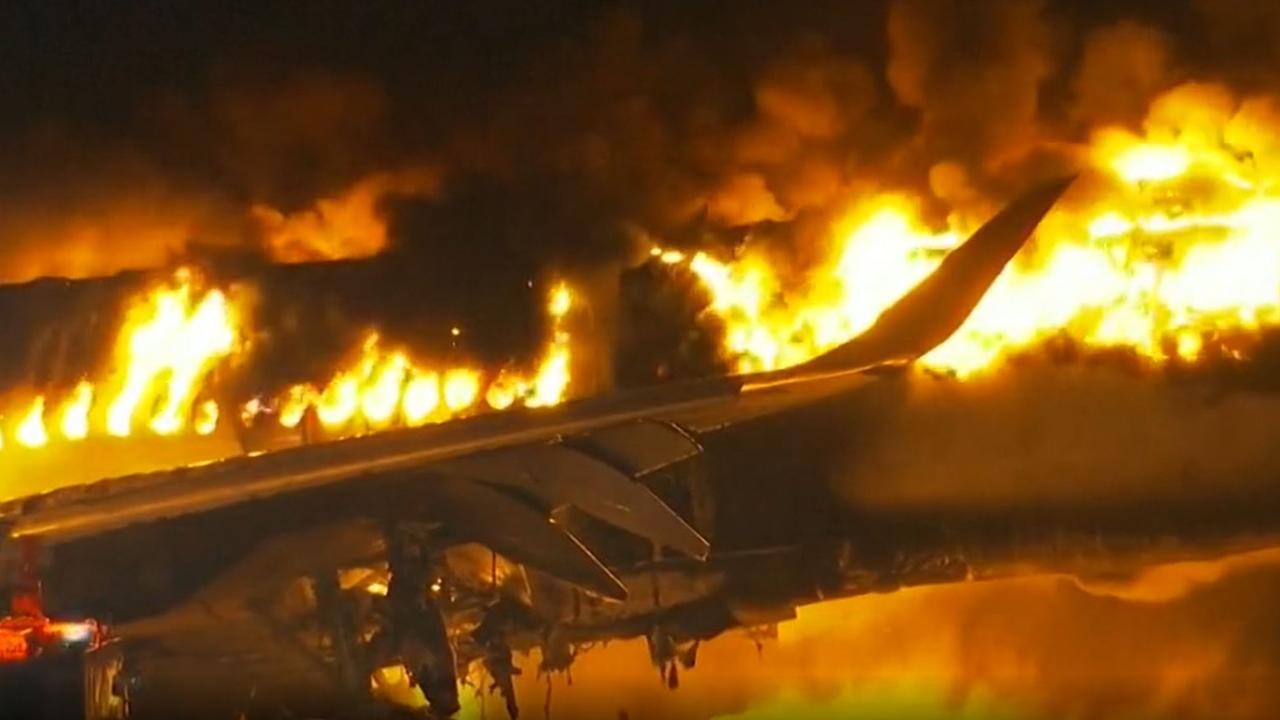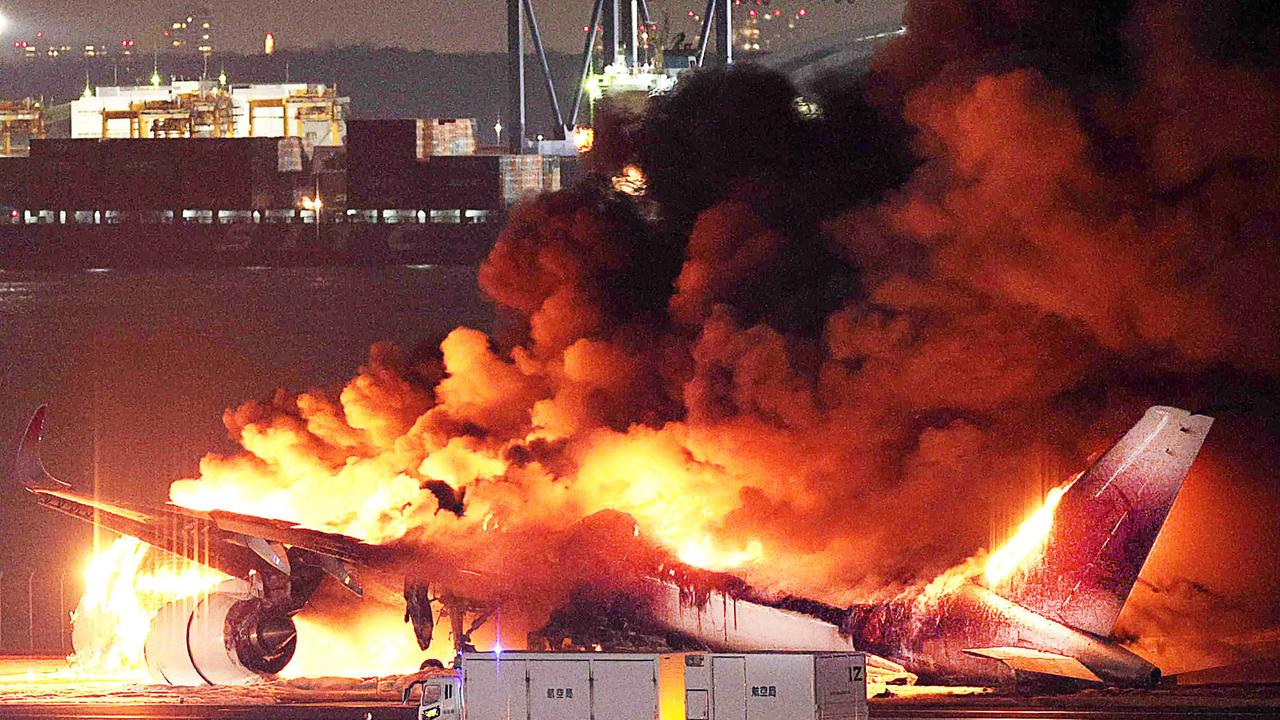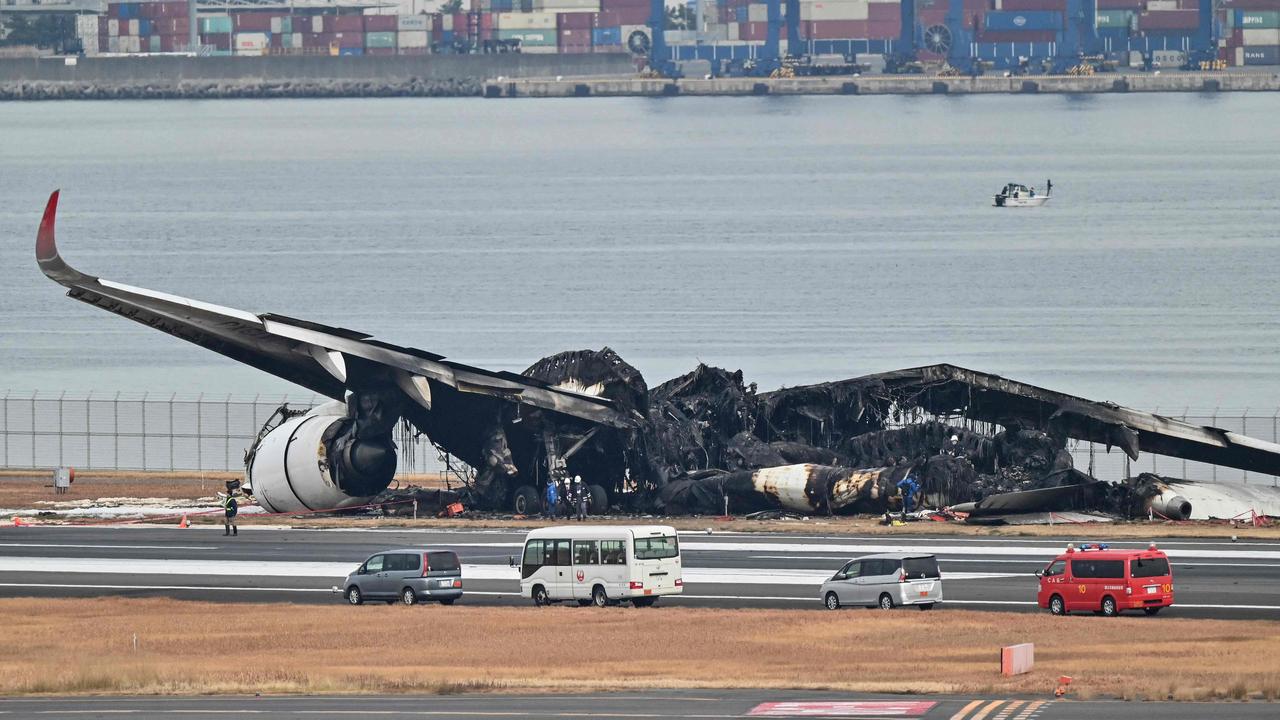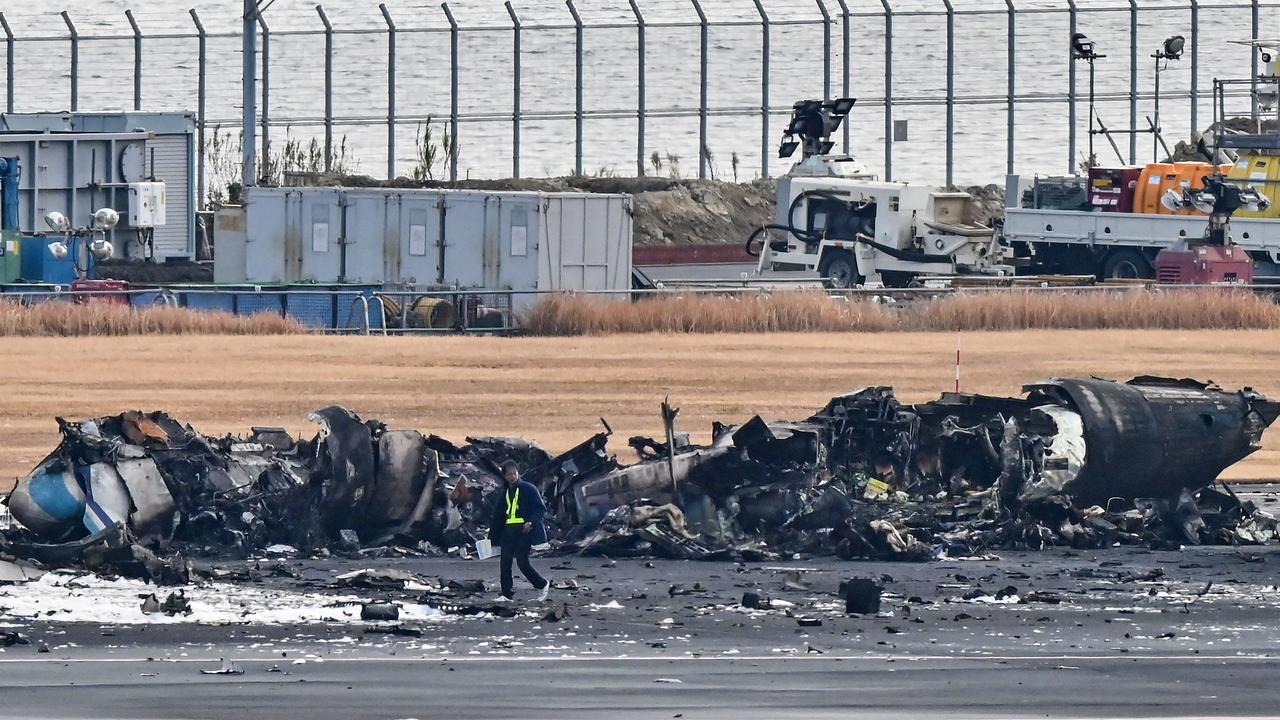Japan plane explosion: 20 minutes of madness as plane erupts
Newly-released transcripts of the fiery Japan air crash have contradicted the remarks made by one of the pilots.

A transcript of the conversations of the crews of the two planes that crashed at Tokyo has revealed the likely cause of the inferno.
Late on Wednesday, local time, Japan’s ministry of transport, released the details of the dialogue between air traffic control and the aircraft.
Five of the six people on the Japan Coast Guard Dash 8 plane died. All the passengers and crew on the Japan Airlines (JAL) Airbus A350 survived in a miracle escape.
The transcripts cover a time period of approximately four minutes prior to the crash on Tuesday evening.
It confirms that at 5.44pm the JAL plane was cleared to land on runway 34R at Tokyo’s Haneda airport.
A few seconds later controllers contacted the Coast Guard plane and told it to “taxi to holding point C5”.
At 5.45pm, the Dash 8 crew member said “taxi to holding point C5, thank you”.
Those seven words means the smaller plane should have stopped short of the runway and waited for further instructions.
However, it appears that plan then entered the runway just as the A350 landed on top of it.
The only surviving crew member of the smaller plane had said he had been given permission to enter the runway. The transcripts appear to contradict this.

How miracle escape happened
Shocking footage released by Japan’s public broadcaster NHK showed the engines on the JAL plane exploding and tearing in half after it collided with the Coast Guard plane.
All 367 of their passengers and 12 crew escaped without life-threatening injuries, disembarking the burning plane in less than 20 minutes.
As Japan reels from the tragedy, attention has turned to the dozen crew members who reacted at phenomenal speed to the unfolding calamity.
The plane was already in flames as it tore down the runway, its pilot managing to bring it to a skidding halt on its nose.
Flight attendants were unable to use the damaged PA system and so issued instructions through megaphones.
And of course, terrified passengers stayed in their seats before making their way to evacuation slides, leaving their luggage to the flames.
Footage from inside the Japan Airlines plane showed flight attendants at the front of the darkened cabin, gesturing for passengers to remain seated and thanking them for their co-operation. As the camera pans, it becomes apparent the plane’s windows are being assaulted by fire.
“Please get me out of here,” one woman shouts in the video. A child is heard asking: “Why don’t you just open the doors?”

A separate audio clip from Haneda’s control tower, understood to have been taken in the moments before the collision, a voice can be heard telling JAL’s flight to “continue approach”.
“Clear to land 34R Japan Airlines 516,” a controller can be heard saying in the recording.
Swede Anton Deibe, 17, who was on board with his parents and sister when the plane crashed, said the experience was “hell”.
“The entire cabin was filled with smoke within a few minutes,” he told Swedish newspaper Aftonbladet.
“We threw ourselves down on the floor. Then the emergency doors were opened and we threw ourselves at them.
“The smoke in the cabin stung like hell. It was hell. We have no idea where we are going so we just ran out into the field. It was chaos.”

Though the horror of the passengers is apparent, aviation experts say the evacuation was a textbook example of aviation safety.
“From what I saw on the footage, I was surprised and relieved that everyone got out,” Graham Braithwaite, professor of safety and accident investigation at the UK’s Cranfield University, told CNN.
“It’s such a severe impact for any aircraft to have to withstand. But knowing what I know about that airline, and how much effort they put into safety and into crew training, the fact that they did do such a good job shouldn’t be such a surprise.
“They have a very strict culture around standard operating procedures and doing everything properly. That’s one of the reasons in this case I think the crew seems to have performed so well.”

About 10 minutes after passengers disembarked, the Japan Airlines plane exploded and split in half.
Former commercial pilot Roger Whitefield described the passengers’ escape as a “miracle”.
“We have just witnessed a miracle,” Mr Whitefield told Sky News.
“The way they got all those passengers off that aeroplane is almost beyond belief.”

How did the Japan Airlines crash happen?
The incident occurred when the Japan Airlines flight landed on one of the four runways at Haneda Airport in Tokyo, where a Coast Guard aircraft was already preparing to take off, Japan’s Transport Ministry Civil Aviation Bureau confirmed late on Tuesday.
The Coast Guard pilot reported to his base that his aircraft exploded after colliding with the commercial plane, Vice Commander Yoshio Seguchi said.

It’s understood the smaller plane — a Bombardier Dash-8 — was preparing to fly to areas impacted by the recent Japanese earthquake, which caused tsunami warnings and widespread destruction to residential areas.
But, according to Flight Radar 24, it wasn’t equipped with a modern ADS-B transponder.
ADS-B transponders are used to transmit highly accurate information about an aircraft’s position to ground controllers and directly to other aircraft.
The system is more accurate than using conventional radar surveillance.
Two probes have been launched to determine exactly how the crash occurred.





